The Kokufu-ten is Japan’s top bonsai exhibit. It’s presented in two halves. One hundred and fifty-one displays are set up for a few days, then another one hundred and fifty-one displays are set up after a day-off to facilitate the change.
The quality of the trees on display is outstanding. I could share photos of any eight trees from the exhibit and write at length about what makes them great. Instead, I’ll focus on the eight that received recognition by the Japanese Bonsai Association.
Part 1
One of the first trees visitors saw when they entered the exhibit was a large white pine clump growing on a rock. The composition sat in a bronze doban filled with sand to suggest an island setting.
Unlike most prize-winners, this tree required some effort to follow the lines of the trunks. What was easy to see was the great age of the composition.
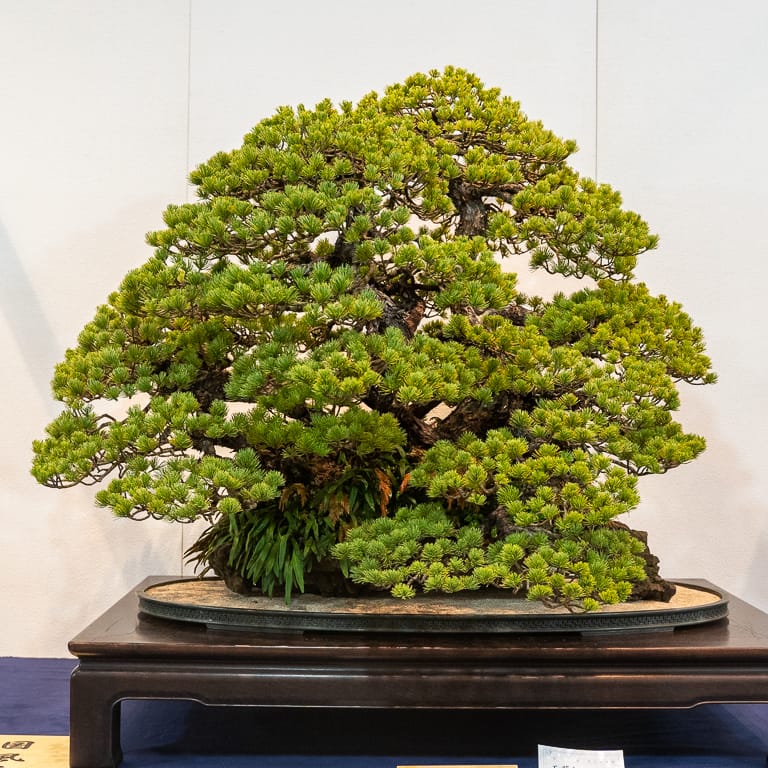
White pine rock planting
Only one juniper received the Kokufu prize this year – a large shimpaku. The trunk twists from trunk to ten-jin (the dead branch at the top of the tree) and three slender life-lines spiral along with the deadwood.
Although it’s great to see aged deadwood in the trunk, I appreciate seeing it in the foliage too. The branch pads are full and supported by many small branchlets that reflect many years of training as bonsai.
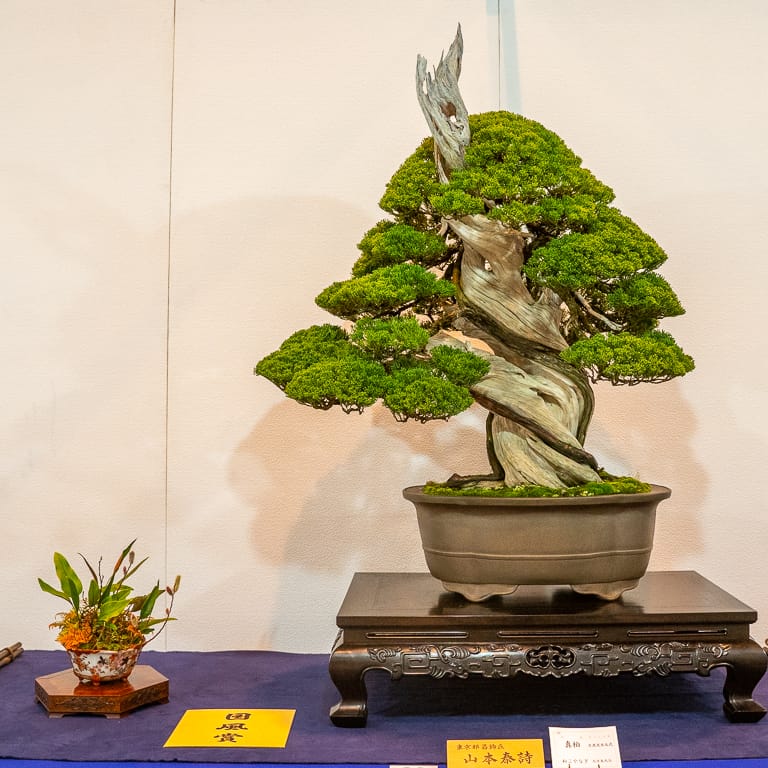
Shimpaku juniper
The most simple prize-winning tree from the first half was a medium-sized root-over-rock trident maple. Two main clusters of roots straddle a stone and the trunk gently moves left and right as it extends toward the tree’s apex.
What makes the tree outstanding? Great branch density. The spaces between the twigs are consistent from top to bottom, and the branch movement is gentle. Despite the great density, the tree has a light feeling owing to the slender primary branches that support the fine twigs.
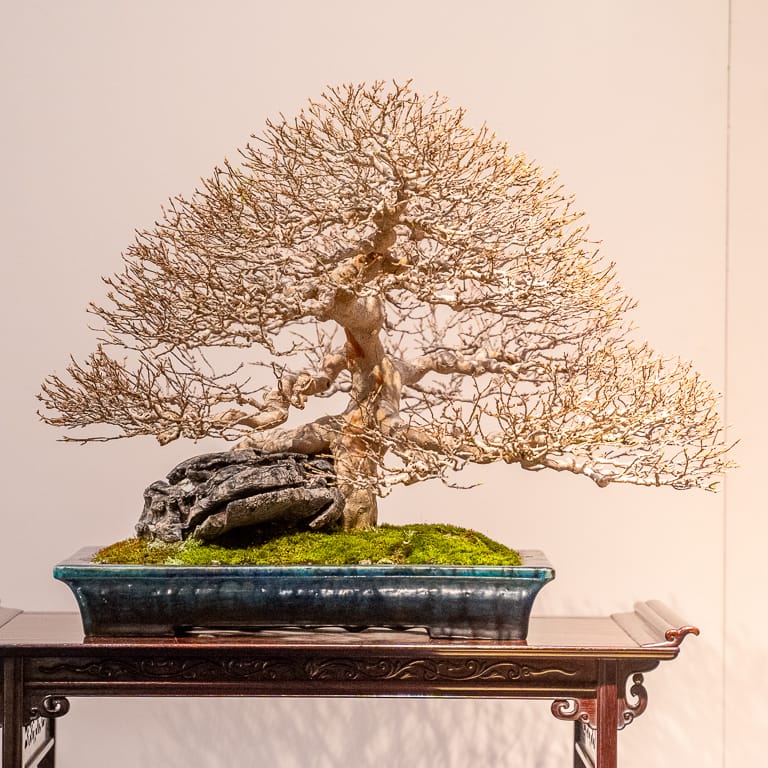
Root-over-rock trident maple
A shohin display was the fourth prize-winner in part one. To win a Kokufu-prize, shohin displays must be well arranged, and each tree should be a great example of its species. This year’s winner was no exception.
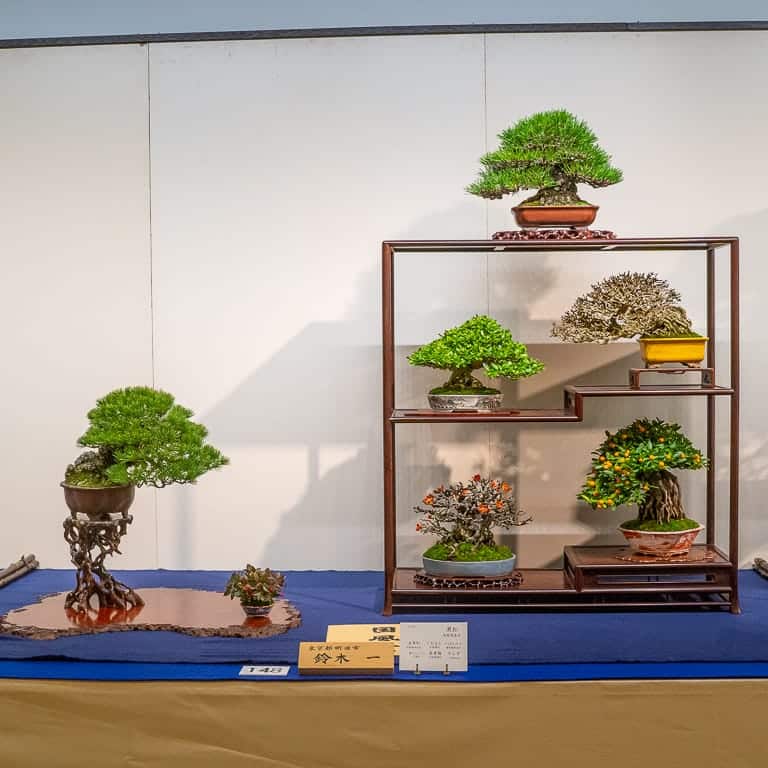
White pine (goyo-matsu), ardisia (yabukoji), black pine (kuro-matsu), gardenia (kuchinashi), privet (ibota-no-ki), dwarf flowering quince (chojubai), dwarf kumquat (kinzu)
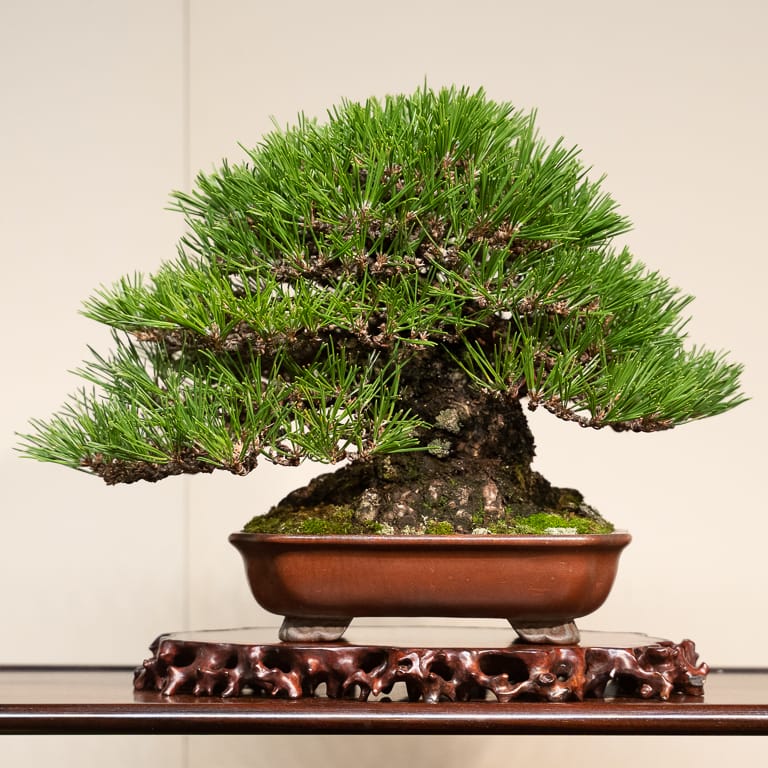
Close-up of the black pine atop the box stand
Part 2
The first prize-winner in part 2 of the exhibit was a white pine. It took me a while to figure out how the lifeline extended from the soil to the apex. Several roots emerge from the right side of the pot before coming together to form the main trunk. This section of the trunk is visible on the left side of the tree as it extends toward the crown of the tree where the apical branches split off to form the top half of the canopy.
None of this was clear from a casual glance at the tree’s silhouette. Had I not looked closer, I might have missed the most interesting part of the tree!
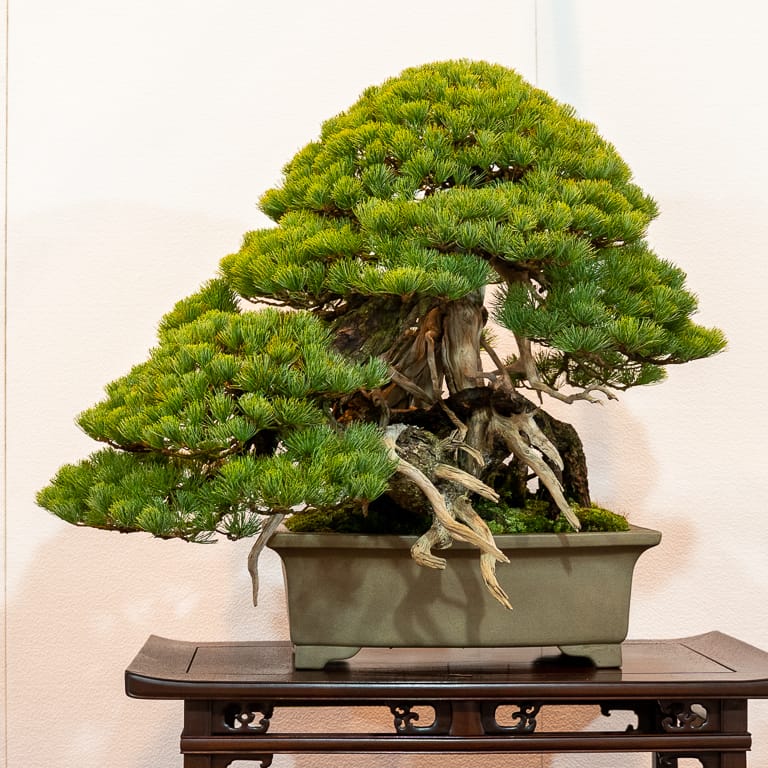
White pine
The most attention-getting prize-winner was a Bank’s rose. I haven’t seen many large roses in past exhibits, but I hope to see more in the future. The tree is a common cultivar in the U.S. so be on the lookout for specimens with large trunks!

Banks’ rose – styled by Kenji Oshima
One of the treats of visiting the Kokufu-ten is seeing trees in person that you’ve seen before, whether in pictures or in gardens. That’s the case for the hinoki below owned by Zenkyo Omura, the priest at Shinpukuji temple in Okazaki. It’s a beautiful example of how hinoki branches can be trained by careful pruning over long periods of time. Note this is the straight species, Chamaecyparis obtusa, and not a dwarf cultivar.
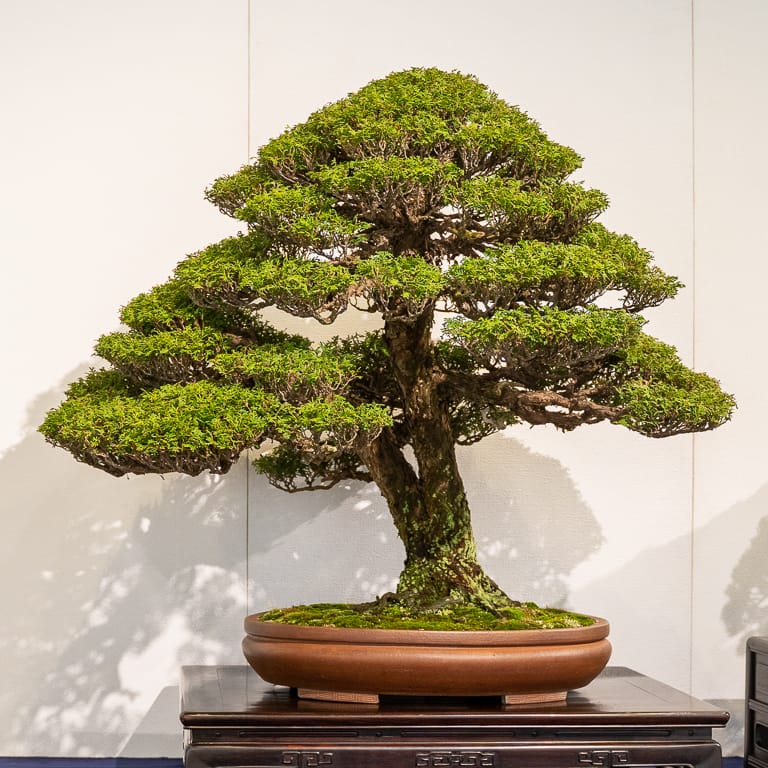
Hinoki – styled by Akio Kondo
The last prize-winner is a dwarf flowering quince, commonly known by the name of the cultivar, ‘Chojubai.’
This species grows slowly. Developing such a large trunk and dense branching can take decades and the result isn’t always this beautiful. Because the branches naturally grow straight, it requires effort to create such gentle curves without looking artificial. And as the orange flowers are just coming into bloom, the timing was perfect for the exhibition.
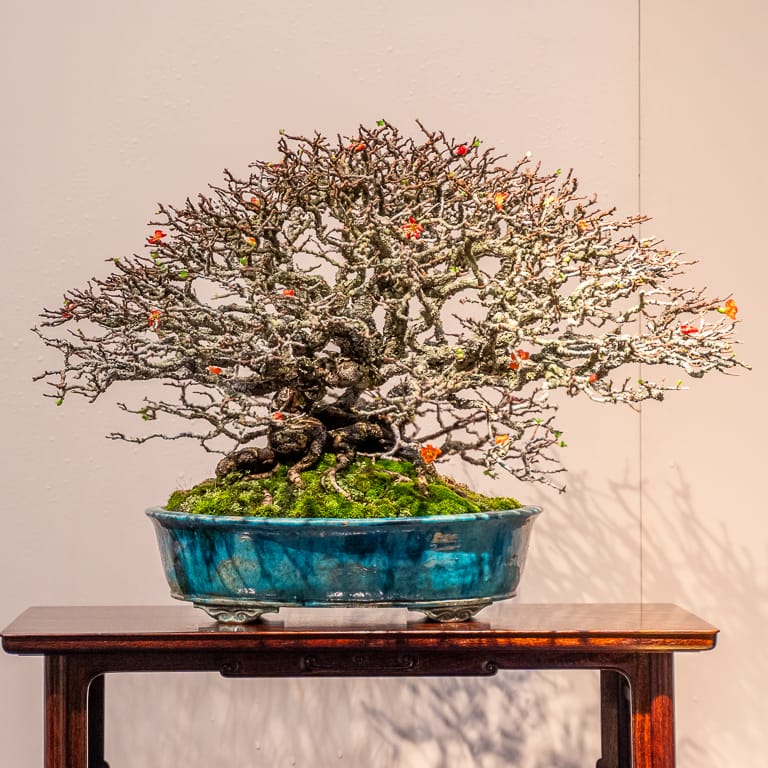
Dwarf flowering quince ‘Chojubai’
Next up, more photos of trees from Japan.
Subscribe to Bonsai Tonight
New Posts Delivered Every Tuesday and Friday
Sarah says
I read this post over breakfast and was so taken by that shohin pine I poured coffee down the front of my shirt without noticing – that’ll teach me I guess
Guilard says
sa fais rêve de si beaux arbres
Ann Mudie says
Beautiful trees, especially the Banks’ rose.